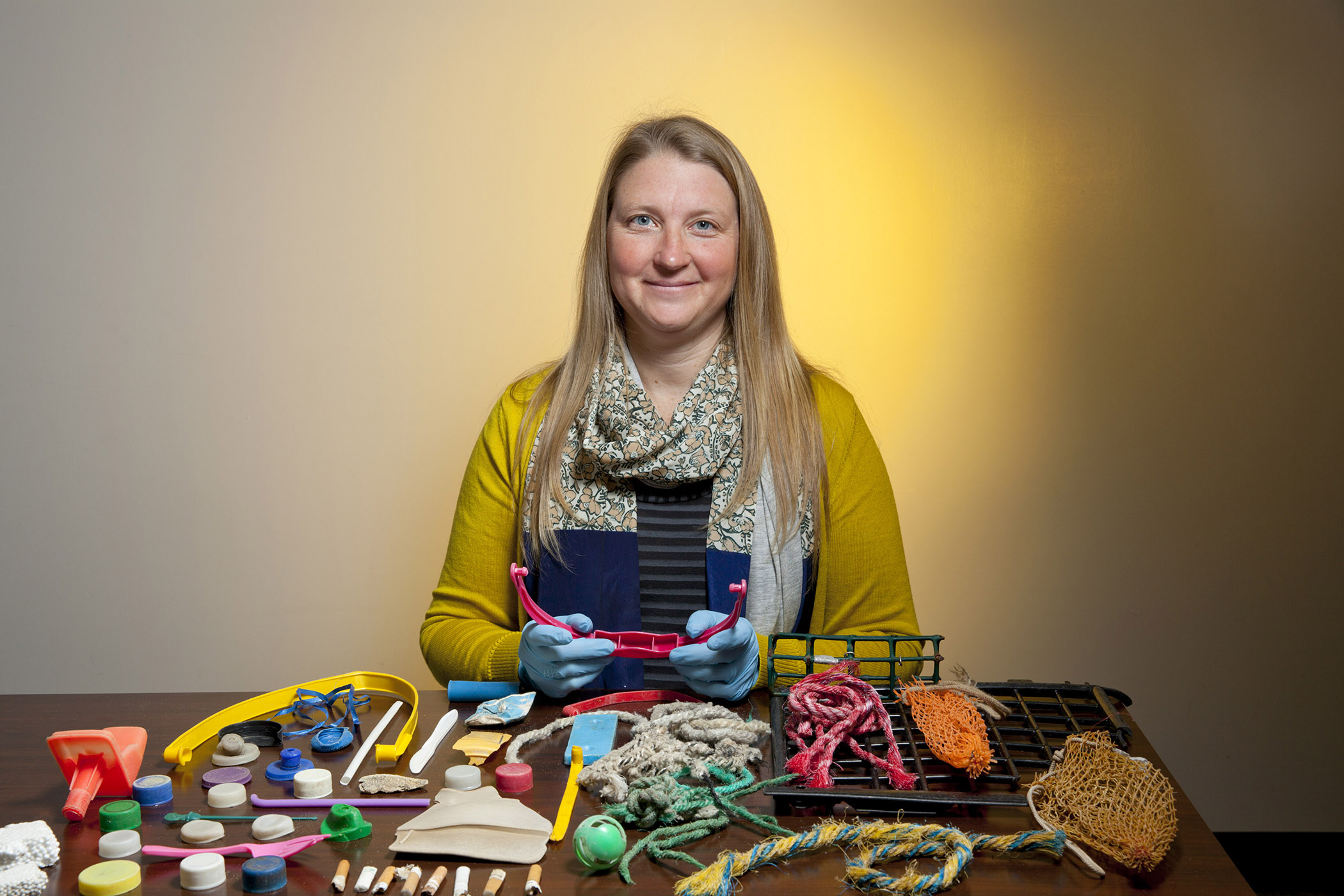Jenna Jambeck, an assistant professor in the College of Engineering, is obsessed with trash.
Her favorite scene in her favorite movie, Star Wars, involves a trash compactor; she readily admits to having gone Dumpster diving for research; and, if that were not enough, she met her husband, Matt Farfour, at a landfill.
“I’m completely and totally fascinated by it,” said Jambeck, who studies and teaches environmental engineering with a specialization in solid waste.
What interests Jambeck about trash isn’t necessarily the messiness or the smell-although she admits landfill odors wistfully transport her back to some research projects in graduate school at the University of Florida. Instead, Jambeck thrives on the kind of creative problem solving that arises from solid waste management.
When trash is produced, it has to go somewhere. But few people want a landfill smelling up their hometown and even fewer want trash littering the streets, streams and oceans. So in studying solid waste management, environmental engineers look at where waste gets disposed, they look for more effective ways to protect the environment and they look out for people’s interests.
It’s this overlap of engineering and sociology that fascinates Jambeck.
“Engineers are very technology focused, but I think we cannot ignore the human component,” Jambeck said. “In environmental engineering, we’re not going to be able to solve our problems just with technology.”
Jambeck’s current research is a part of a National Center for Ecological Analysis and Synthesis working group; an ambitious project to estimate the amount of plastic waste entering the planet’s oceans from land-based sources. The amount, which Jambeck estimates is in the millions of metric tons, could be a call to action to reduce the use of disposable plastics and to improve the infrastructure for waste management.
This collection of plastics in the Earth’s oceans belies bigger issues with the worldwide consumer economy, according to Jambeck.
“When people make products, they don’t think about what will happen to them when they are thrown away,” she said. “I wish they did.”
This project builds on Jambeck’s previous work investigating marine debris.
In 2011, Jambeck developed the Marine Debris Tracker, a smartphone application that allows citizen-researchers to provide data about where and what kind of trash is found in waterways.
Jambeck also helped create the WeRecycle app, which provides the location of the nearest recycling bin on UGA’s campus. Thanks to a partnership with Keep America Beautiful, the app also slowly is compiling the locations of bins across the U.S. and even around the world. Both applications are available for free for iOS and Android devices.
These projects have combined Jambeck’s innovative spark with her desire to protect and improve environmental sustainability.
Jambeck brings that same sense of innovation to her instruction where she builds assignments around projects that offer real-world experience.
In a second-year environmental design class this semester, Jambeck has given her students an assignment to create environmental engineering for Athens Clarke-County government departments.
One group is looking at possible options for managing household organic waste such as food scraps. The students are examining whether the county should institute a composting program or continue to use traditional landfills.
During one group meeting, students began to grapple with the kind of questions that Jambeck finds so fascinating about waste management.
When discussing the implementation of a compost program, students questioned whether Athens-Clarke residents would be willing to recycle their kitchen scraps.
“How do we convince the public that they have to do this?” asked Matthieu Trunnell, a second-year student from Leesburg.
It’s these kind of questions that will occupy the students all semester, just as they have inspired Jambeck’s research.
“I love challenging students with problems that don’t have an absolute right answer, where there are different ways for them to come up with their design,” Jambeck said.


